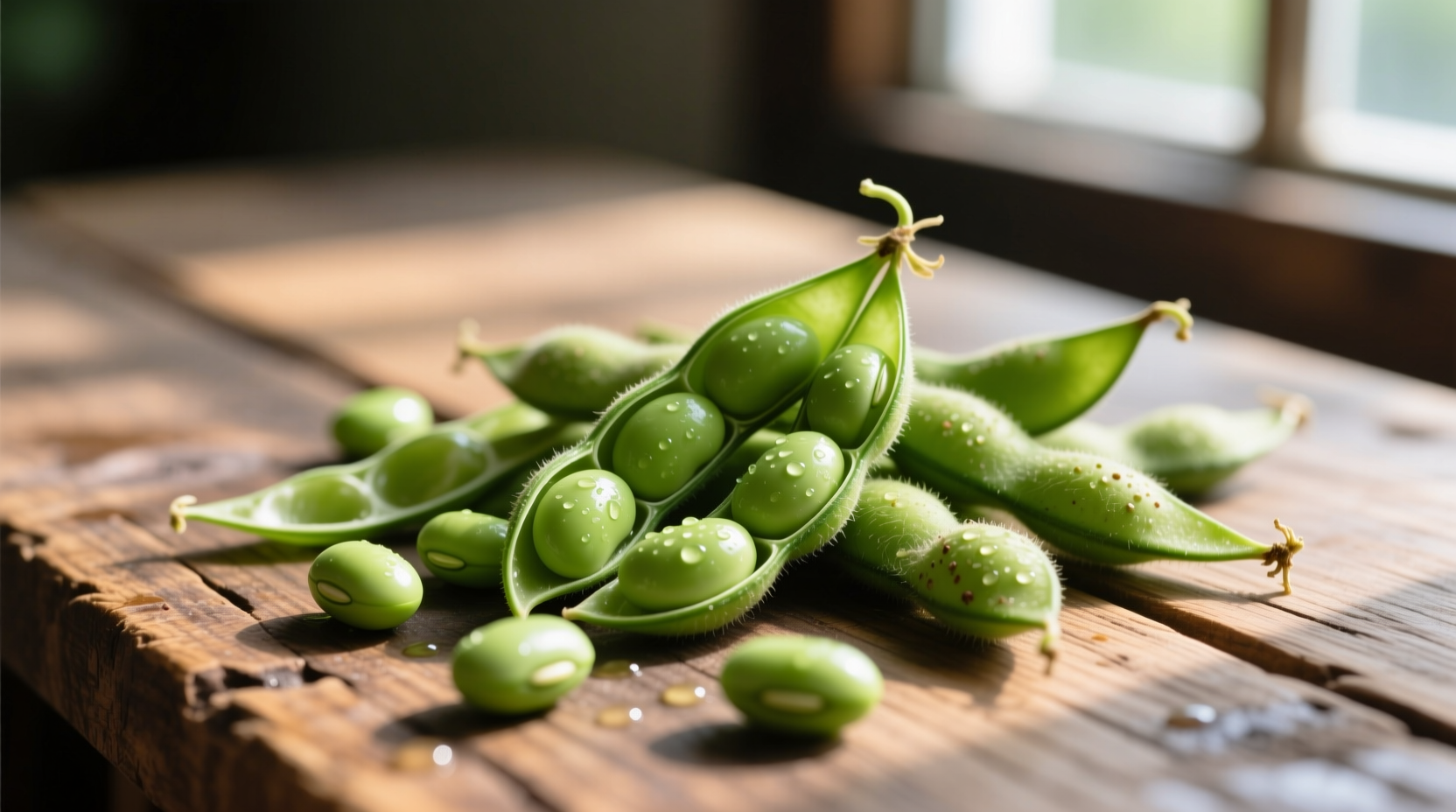Ever wondered what gives this vibrant green snack its distinctive flavor? As someone who's worked with ingredients across Michelin-starred kitchens and casual dining settings, I've helped countless home cooks understand how to appreciate edamame's unique taste profile. Whether you're encountering edamame for the first time at a Japanese restaurant or picking up frozen pods at your local grocery store, knowing what to expect can transform your culinary experience.
The Core Flavor Profile of Edamame
Edamame, which are immature soybeans still in their pods, deliver a remarkably clean and fresh taste experience. Unlike mature soybeans that develop earthy, sometimes bitter notes, edamame maintains a delicate sweetness that makes it approachable even for those new to plant-based proteins.
When steamed or boiled with a light sprinkle of sea salt (the traditional preparation method), edamame reveals three distinct flavor components:
- Natural sweetness – Similar to fresh peas, with subtle sugar notes that intensify when cooked properly
- Grassy freshness – A vegetal quality reminiscent of young spinach or asparagus tips
- Nutty undertones – A mild, pleasant earthiness that hints at its soybean heritage without overwhelming the palate
According to research from the USDA Agricultural Research Service, these flavor characteristics come from specific compounds including sucrose (for sweetness), chlorophyll derivatives (for the grassy notes), and certain amino acids that develop during the immature soybean stage.
| Food Comparison | Similarity to Edamame | Key Differences |
|---|---|---|
| Green peas | High – similar sweetness | Peas are starchier, less vegetal |
| Green beans | Moderate – similar freshness | Green beans have more fibrous texture |
| Mature soybeans | Low – same plant family | Mature beans are earthier, sometimes bitter |
| Spinach | Moderate – similar vegetal notes | Spinach has stronger iron notes |
How Preparation Affects Edamame's Flavor
The way you prepare edamame dramatically influences its final taste. This is where many first-time eaters encounter confusion about what edamame should actually taste like.
Freshness matters most: Truly fresh edamame harvested within days of consumption offers the brightest, sweetest flavor. Frozen edamame (the most common retail option) maintains excellent quality when properly processed, but loses some of the delicate fresh-picked sweetness.
Cooking technique impacts texture and taste:
- Steaming (3-5 minutes) – Preserves the brightest green color and freshest flavor
- Boiling (4-6 minutes) – Can slightly intensify sweetness but risks waterlogging if overdone
- Overcooking (beyond 7 minutes) – Causes significant flavor loss and mushy texture
Professional chefs consistently recommend adding salt to the cooking water rather than after cooking. This technique, documented in the Serious Eats culinary database, allows the salt to penetrate the pods during cooking, enhancing the natural sweetness through osmotic balance.

What to Expect When Eating Edamame
If you're trying edamame for the first time, understanding the eating process helps set proper expectations for the flavor experience.
The pod vs. the bean: Only the beans inside the pod are meant to be eaten—the fibrous pods are not digestible. To enjoy edamame traditionally, place a pod in your mouth, squeeze the beans out with your teeth, then discard the empty pod.
Seasoning considerations: While plain edamame has a delicate flavor, the standard preparation includes coarse sea salt. This isn't just for taste—the salt actually enhances the natural sweetness through flavor chemistry. If you've only tried unsalted edamame, you might find it disappointingly bland.
Temperature effects: Edamame is best enjoyed warm but not hot. When served at optimal temperature (around 140°F/60°C), the volatile flavor compounds are most perceptible to your taste buds.
Common Flavor Misconceptions
Several misunderstandings often lead people to question what edamame should taste like:
- “Is edamame supposed to taste like tofu?” – No. Tofu is made from mature soybeans that have been processed, resulting in a much more neutral, sometimes beany flavor. Edamame's youth gives it distinctive sweetness that disappears during tofu production.
- “Why does restaurant edamame taste saltier than store-bought?” – Restaurants typically use a higher salt concentration in cooking water (about 1-2% salinity) which enhances flavor without making the final product overly salty.
- “Does edamame taste different when frozen?” – Properly frozen edamame retains about 90% of its fresh flavor profile. The USDA Food Research Lab confirms that flash-freezing preserves the sucrose content responsible for edamame's characteristic sweetness.
How to Best Experience Edamame's Flavor
To truly appreciate what edamame tastes like, follow these professional chef recommendations:
- Start with quality product: Look for bright green, firm pods without dark spots. Frozen edamame should be individually quick frozen (IQF) to prevent clumping.
- Perfect the cooking: Steam for 4 minutes with 1 tablespoon of sea salt per quart of water. This timing preserves texture while allowing salt penetration.
- Serve immediately: Edamame's volatile flavor compounds begin dissipating after 10 minutes at room temperature.
- Experiment with enhancements: While traditional preparation uses only salt, professional kitchens sometimes add a splash of rice vinegar or a pinch of bonito flakes to create more complex flavor layers.
Remember that edamame's flavor profile sits in that perfect balance between vegetable and protein—it shouldn't taste strongly “beany” like mature soy products, nor should it have the starchiness of other legumes. When prepared correctly, it offers a clean, refreshing taste experience that's become popular worldwide for good reason.











 浙公网安备
33010002000092号
浙公网安备
33010002000092号 浙B2-20120091-4
浙B2-20120091-4